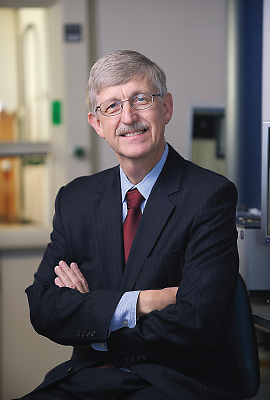Advisory Group Draws Roadmap for President’s BRAIN Initiative
Abstract
An interim report for President Obama’s BRAIN Initiative focuses on new technologies to develop an integrated view of brain circuits and their function.
President Obama’s Brain Research through Advancing Innovative Neurotechnologies (BRAIN) Working Group should focus on intermediate circuits and activity in the brain—those more complex than individual cells but not yet encompassing the whole brain, said an interim advisory report presented September 16 at the National Institutes of Health (NIH).
“Our goal is to look at the broad impact of this project on neuroscience research by posing problems, not dictating solutions,” said committee cochair William Newsome, Ph.D., a professor at Stanford University, in a teleconference.
“The challenge is to map the circuits of the brain, measure the fluctuating patterns of electrical and chemical activity flowing within those circuits, and understand how their interplay creates our unique cognitive and behavioral capabilities,” said the committee’s written report. “[O]ur ultimate goal is to understand our own brains.”
The advisory committee included one psychiatrist, Karl Deisseroth, M.D., Ph.D., a professor of bioengineering and of psychiatry and behavioral sciences at Stanford University.
The committee heard from dozens of invited experts representing a variety of relevant fields: chemistry, molecular biology, electrophysiology, optics, structural neurobiology, data analysis, computation, and human neuroscience.
“The focus is not on technology per se, but on the development and use of tools for acquiring fundamental insight about how the nervous system functions in health and disease,” the report stressed.
Once under way, the program should begin by generating a census of neuronal and glial cell types and creating structural maps of the brain, said cochair Cornelia Bargmann, Ph.D., a professor at Rockefeller University in New York.
Work would begin first with animal models, graduating eventually to humans. But human research data could come even now from patients undergoing diagnostic brain imaging or by monitoring those receiving deep brain stimulation and other technological interventions.
“We’re seeking an understanding of the dynamics of the brain: where signals come from and how they are related to internal states,” said Newsome.
Understanding brain circuits will mean identifying and characterizing their cells, clarifying synaptic connections, observing patterns of activity during behavior, and perturbing these patterns to assess their significance, said the report. Doing so will mean integrating observations of the brain in action across time and space.
Such research will require new or improved technologies to record brain activity, manipulate brain circuits, and then connect neuronal activity to behavior in the organism. That research and the tools to process the immense quantities of data require close collaboration between neuroscientists and computer specialists, statisticians, physicists, engineers, and other scientists.
Rapid dissemination of these tools as they are developed, through training modules and summer courses, would accelerate progress.

The BRAIN Initiative will need sustained support over many years, says NIH Director Francis Collins, M.D., Ph.D.
“The overarching vision is to combine these approaches into a single, integrated science of cells, circuits, brain, and behavior,” said the report.
The committee will present its final report in June 2014.
What will happen then is an open question given the current confusion over federal budgets.
“It’s hard to be specific, but this project will need sustained support over many years,” said NIH Director Francis Collins, M.D., Ph.D. “We will need to nail down a timeline in June.” ■
The advisory committee’s report is posted at http://www.nih.gov/science/brain/09162013-Interim%20Report_Final%20Composite.pdf.



